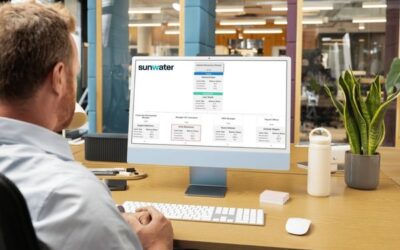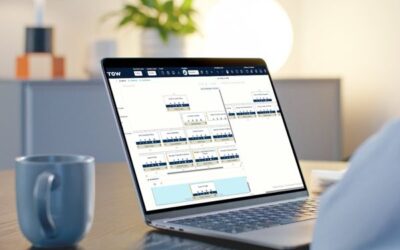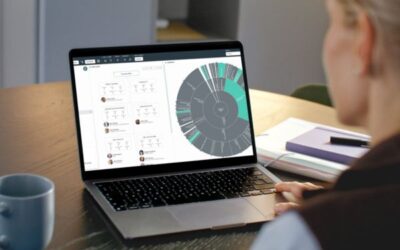What is workforce modelling & why is it important?
Workforce modelling is a strategic process where you can plan for future workforce needs based around business goals, new technology or workforce demographics. The key activities can include scenario planning, talent management strategies and using technology that enables you to make informed decisions in these areas.
Visualising an organisational transformation enables you to evaluate the differences between two points in time before implementing any changes. Being able to analyse multiple ‘what-if’ scenarios allows you to look into the courses of action to find the optimal plan.
Workforce modelling improves overall business resilience through:
- Expanding the understanding of what can be done with your workforce
- Enabling the examination of assumptions & developing predictions of outcomes
- Pre-empting skill gaps so new employees can be hired before current employees get stretched too thin
- Showing you who needs to do what, as well as additional factors involving training & data migration
Workforce modelling chart examples
Many organisations currently rely on spreadsheets and Visio to manage their workforce remodels. These tools aren’t designed to be used for org design and makes the planning process a lot more painful than it needs to be.
There are many solutions, but the best options enable you to create a visual plan of your future workforce using your people data. By visualising information and key metrics, planners can immediately see the impact that their changes will have against strategic goals.
org.manager allows you to create a copy of your current org structure (the ‘now‘), so you can create multiple what-if scenarios (the ‘model‘). The ability to model the future state and compare it to the current state is important to drive fact-based decisions.
Workforce modelling in org.manager works through an recurring extraction of your HR and HCM data (which is refreshed automatically every day). In simulation mode, a copy is made of your current structure so you can make changes in the ‘modelling‘ view (see split screen above). All without touching your HR system of record, as this is entirely separate from your modelling environment.
You can create new positions or departments in a few simple clicks. Easily drag-and-drop any object from one area to another to see your headcount and budget metrics dynamically update as you go. Summary roll-up of key metrics like headcount and salary help you manage quantitative goals for the transformation to be conducted.
As modelling is usually a collaborative exercise, you can control who has ‘read and write’ access to your models, along with log analysis to view each change. Modelling can be performed in a centralised or distributed manner, reflective of your current org structure. You can quickly view and export all new additions, changes and deletions made in your model based on positions, persons, departments and business units.
Tip: Set multiple phases for implementing your org design. This enables you to take some time to reflect and adjust your plans as you go, mitigating the effect of anything that isn’t quite the right fit (don’t worry – no redesign is ever perfect!).
How workforce modelling software will improve your business
Using workforce modelling software to manage organisational change helps you work smarter, not harder. Many organisations need help in this area, only to have budget as a barrier. But it’s not hard to build a business case when you can double your efficiency compared to doing it manually.
Here are 5 ways that workforce modelling software will help you level up your org design process:
Optimised workforce planning: Gain insights into current workforce demographics, skills and capacities, allowing you to anticipate future needs accurately. This ensures the right people with the right skills are in place, avoiding overstaffing or understaffing and improving operational efficiency.
Improved decision making: Clearly see the impact of each choice – allowing for better decision making with real-time supporting data on hand. By aligning your workforce plans with strategic business objectives, you’ll become more agile and can feel more confident that your decisions will have the desired outcomes.
Resource optimisation: Identify inefficiencies in resource allocation and utilisation. By accessing a current analysis on productivity and work patterns – you can make adjustments to enhancing overall productivity.
Agility & adaptability: An important factor when designing an org change is time. In general, the ability to make quicker and more informed decisions can lower the cost and risk to the organisation. With the ability to simulate various scenarios, you can quickly adapt to changing market conditions or regulatory requirements.
Improved communication: Easily communicate growth plans across your organisation. Once you’ve had a chance to design your new organisation, you can securely share your proposed changes to your leadership team for feedback or approval. Once finalised, you can use the same tool to quickly and easily explain changes to employees.
Common use case questions
Workforce modelling that is driven by measurable goals (often expressed by headcount and budgetary percentages) helps to drive efficient business outcomes. Here’s some common use case questions that will drive more informed business decisions when approaching your org design project:
- What is the current headcount and salary structure of my organisation?
- What are the headcount and budgetary goals of our organisation?
- How can I quickly add, modify or remove positions, employees or departments for my organisation?
- How can I quickly compare changes made in the plan with the current org structure?
- Who will be the new leaders of our organisation?
- Which positions remain unfilled?
- Which departments will be over-budget?
- Which departments lack headcount or do not have a supervisor?
- What new positions need to be created and when are these positions to be filled?
- Do positions in similar departments complete similar tasks?
- Are we retaining our high performers?
- What objects (positions, persons, depts) have been created, moved, or deleted in the model?
- How can I share my what-if planning with other colleagues in a secure, shared environment?
- How can I view a log of which changes have been made and by whom?
TIP: All of these questions can be quickly and easily answered using org.manager!
When considering a workforce modelling solution for your next org design project, select a tool that allows you to work with ‘real-time‘ data. What do we mean by real-time? It’s workforce data that is accurate, automated and on-demand across the organisation.
What we’ve often seen is that data is usually ‘one time’, this means gathered for a specific purpose, project or report. One-time data doesn’t give an accurate picture of the organisation, any change made to your business after extraction will not be reflected in the analysis.
org.manager is the leading org design solution because it is built on your robust data models, so you can leverage your data in real-time to gain useful insights into your workforce. Plus you can securely share information with appropriate access protocols, so that sensitive information is always safe.
Final thoughts
Overall, using workforce modelling software enables businesses to make more informed decisions regarding their workforce.
Navigo has 20+ years’ experience implementing successful workforce solutions across all industries in Australia and New Zealand. Book a demo today to discover how our workforce modelling solutions can elevate the way you work.



